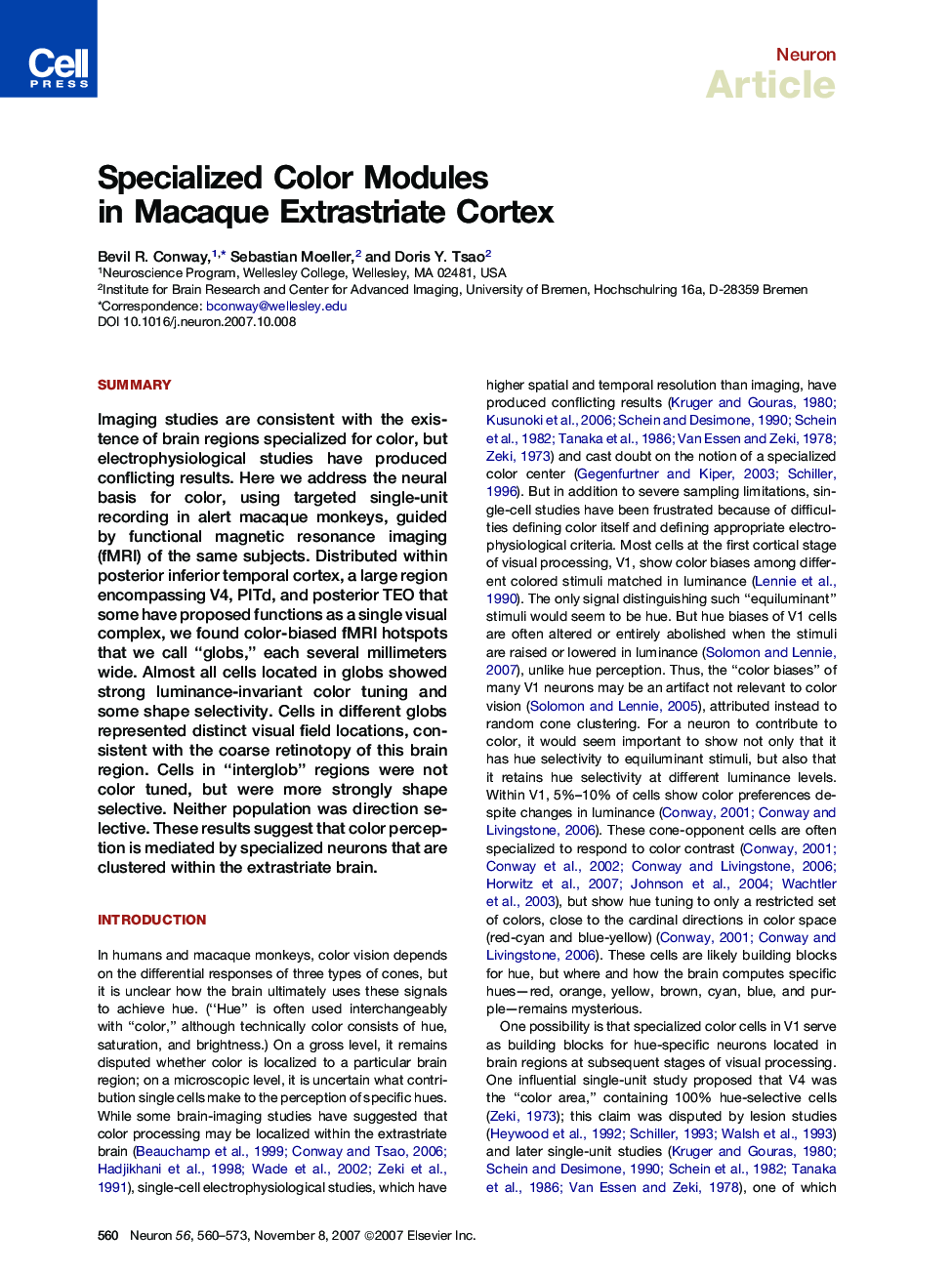| Article ID | Journal | Published Year | Pages | File Type |
|---|---|---|---|---|
| 4322433 | Neuron | 2007 | 14 Pages |
SummaryImaging studies are consistent with the existence of brain regions specialized for color, but electrophysiological studies have produced conflicting results. Here we address the neural basis for color, using targeted single-unit recording in alert macaque monkeys, guided by functional magnetic resonance imaging (fMRI) of the same subjects. Distributed within posterior inferior temporal cortex, a large region encompassing V4, PITd, and posterior TEO that some have proposed functions as a single visual complex, we found color-biased fMRI hotspots that we call “globs,” each several millimeters wide. Almost all cells located in globs showed strong luminance-invariant color tuning and some shape selectivity. Cells in different globs represented distinct visual field locations, consistent with the coarse retinotopy of this brain region. Cells in “interglob” regions were not color tuned, but were more strongly shape selective. Neither population was direction selective. These results suggest that color perception is mediated by specialized neurons that are clustered within the extrastriate brain.
